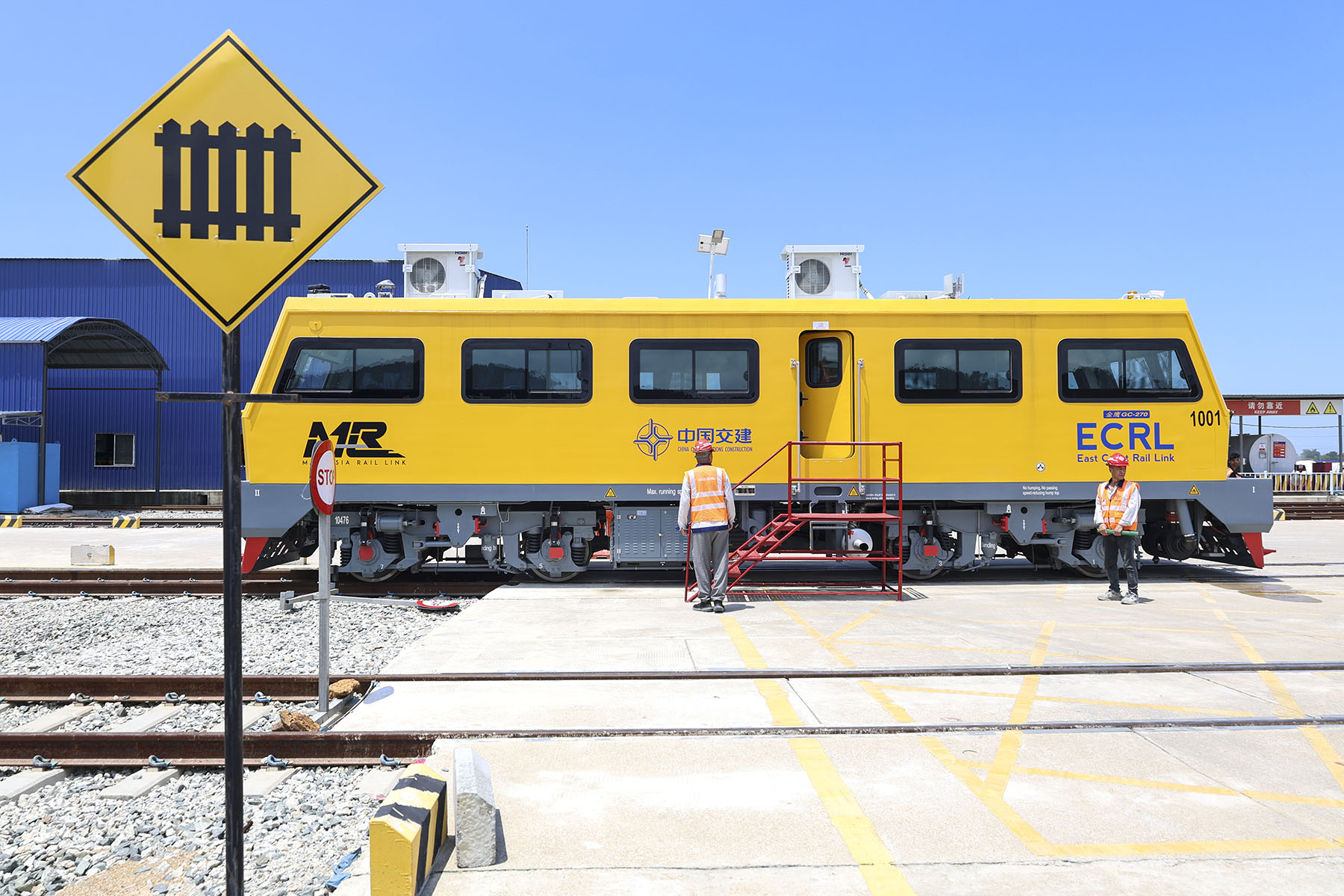Chinese-aided ECRL project expected to create more jobs, boost economy

Zurainda Moon, a middle-aged fruit farmer in Gombak in Selangor, Malaysia, is looking forward to the scheduled launch of the East Coast Rail Link, or ECRL, a flagship project under the Belt and Road Initiative. One of the railway segments being built is not far from his home and will ease the transport of his durian crops, he said.
Construction of the 665-kilometer railway, the largest economic cooperation project between China and Malaysia, started in 2017 and is expected to be fully operational by January 2028. The rail network will connect the east coast states of Kelantan, Terengganu and Pahang to Selangor and Port Klang on Peninsular Malaysia's west coast.
READ MORE: Malaysia’s East Coast Rail Link hailed
China Communications Construction Co, the Chinese contractor, told China Daily the first segment of the route should be completed as scheduled in December 2026.
Zurainda also welcomed the project as it has created jobs. His eldest son is one of about 10,000 Malaysians who have been part of the project since its inception. At its peak, there were more than 23,000 workers from various nations engaged in the project, according to data from China Communications Construction. With just 20 percent of the project remaining, the number of workers is decreasing, the company said.
By the end of March, the project had also engaged about 2,000 local businesses, said Deng Bo, the project's general manager from China Communications Construction (ECRL) Sdn Bhd.
Deng estimated the first railway segment from Kota Bharu in Kelantan to Gombak district in Selangor will be finished in December 2026 and launched in January 2027. It's estimated that the route will cut the current eight-hour travel time by car between Kota Bharu and Kuala Lumpur in half.
The new railway will expand bulk cargo transport capacity, which characterizes one of the key economic advantages of railways, especially for industrial goods, Deng noted.
Malaysian Industrial Development Finance Berhad, a state bank lender, has calculated that the Malaysian economy will grow 2.7 percent in the period between the ECRL's inception and completion.
The standard-gauge railway network will improve the transportation of commodities such as minerals, agricultural produce and industrial goods between nations, Deng said.
Joseph Lim, vice-president of the Malaysia-China Chamber of Commerce, noted the railway will help shorten the transportation time for goods from Malaysia-China Kuantan Industrial Park to Port Klang, a major port along the Strait of Malacca, to less than a day, compared with three to five days of shipping by sea.
"The ECRL will drive the development of Malaysia's East Coast Region, … enhancing connectivity for both people and goods," he said.
Mazlim Husin, chief commercial officer of Kuantan Port, said the ECRL will boost trade between China and Malaysia. The Kuantan Port primarily serves cargo shipped between Pahang and the China-Malaysia Qinzhou Industrial Park in Qinzhou, Guangxi Zhuang autonomous region. The two parks are part of the "Two Countries, Twin Parks "collaboration model between China and Malaysia.
"Any new development in terms of infrastructure will help," Mazlim said.
He said the ECRL will not only ease the overland transport of Malaysian exports, but will also accelerate the distribution of goods imported from Qinzhou to the Malaysian market.
ALSO READ: Xi sees bright future with longtime friend
The railway project has also benefited rural areas along the route.
Hamizi Isa, a grocery shop owner in a remote village in Selangor, said the project's construction has brought in more business. He said he believes his hometown will receive more visitors and do more business once the railway is in full operation.
Malaysian Transport Minister Anthony Loke Siew Fook said in December that Malaysia is hoping to extend the ECRL northward into Thailand, connecting key ports in both countries, according to a report by Malaysian news agency Bernama.
Lim also looks forward to the ECRL connecting to Thailand and even further north to Kunming, Yunnan province, in China and even south to Singapore to form a pan-Asia railway network, as Malaysia is also planning to revive a high-speed rail link with Singapore.
"The improved overland transportation brought by the ECRL will drive development in Southeast Asian countries, particularly benefiting the agricultural sector," Lim said.
Contact the writers at amberwu@chinadailyhk.com


